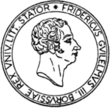Didier Roth’s circular calculating machine for automatic multiplication from 1841
After Giovanni Poleni had invented the first automatically multiplying calculating machine ever built in 1709, Didier Roth was one of the next inventors searching for a solution for automatic multiplication.
The prototype and the original machine from 1841 are in the Musée des Arts et Métiers in Paris today. A fully functioning replica true to the original for the Arithmeum was finished in 2014. To achieve that, the original machine was examined, measured and documented in detail for the first time. Roth used pin wheels for his circular calculating machine and was therefore able to make its design considerably flatter than Philipp Matthäus Hahn.
In those days, multiplying with a calculating machine was usually done by turning a crank several times, corresponding to repeated addition. Multiplying by 9 meant turning the crank 9 times.
What is special about Roth’s four-species machine is that the multiplicand is first set into the input mechanism and then transferred into the result mechanism up to nine times by movement of a central ratchet. To do so, the ratchet and its pointer have to be set to the corresponding digit. When the ratchet is set back afterwards, the number is transferred into the result mechanism in additive direction the corresponding number of times by the pin wheels inside the machine turning several times. To keep the mechanical speed inside from becoming too high and to prevent components from spinning and overturning, Roth fit a clock fly into his machine. The replica vividly demonstrates Roth’s unique inventive genius.
Lena Carta, student of Computer Science, did a 3D video of this machine and its unique mechanics as a part of her bachelor’s thesis in Professor Dr. Ina Prinz’ lecture on the history of mechanical calculation. Have fun watching this detailed and easily understandable video about a fascinating technical mechanism.






